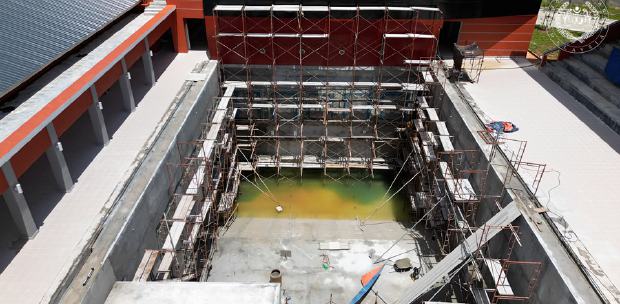IN recent years, a lot of emphasis has been placed on the luxury segment of the residential property market in Malaysia. The boom started in the late 1990s, right after Malaysia’s recovery from the Asian financial crisis in 1997 and 1998.
Kuala Lumpur City Hall had then imposed a blanket freeze on new development of high-rise office buildings in the city. This led to developers and landowners seeking alternative use for their commercially-zoned lands.
The completion of Suria KLCC and Petronas Twin Towers also sparked an interest in developing land around KLCC for high-end, luxury residential properties.
Initially, there were about 5,000 units that were either planned or in various stages of development in and around the KLCC enclave. Of course, that number has grown by leaps and bounds now, as has the geographical boundaries of what constitutes the KLCC enclave. This boundary seems to be ever expanding, with every new development boasting a KLCC vicinity.
Thus, “serviced apartments” were born. If you had a commercially-zoned land, and if you couldn’t build an office tower there becaus e of some statutory freeze or a dip in demand, then the alternative was to build serviced apartments. These developments, although really residential in nature, were considered commercial developments by definition.
The KLCC and its immediate enclave became a magnet for high-end developers and high-net worth investors looking to capitalise on new demand for luxury properties.
For a while, things progressed smoothly, with prices of the first development starting at a modest RM800 per sq ft or thereabouts.
Demand continued to grow and most units were quickly snapped up by a market starved for high-end, world-class properties in a blue-chip location like KLCC. This almost insatiable demand continued to cause prices to rise. From the modest RM800 per sq ft, prices went up to as much as RM2,500 per sq ft for some developments.
However, it was suspect if the rise in prices were sustainable. My opinion is that this drastic rise in prices was fuelled by raw speculation more than solid fundamentals. And we have learnt the hard way that any gain made speculatively is not sustainable for the long run.
As supply continued to grow, the almost insatiable need seemed to have been met. The buying slowed down. The speculative element exited the market, fearing the already high prices of these luxury properties. Investors started to scrutinise everything more carefully, taking their time to invest. And as quickly as it began, the frenzy ended.
Suddenly, there was an abundant supply of high-end luxury residential properties in and around the KLCC enclave being offered for sale and rent. Estate agents were advertising these properties in every available media, doubling their efforts as enquiries from potential buyers dried up.
As the economy continued to worsen and the property market continued its downward slide, these luxury properties and serviced apartments were the first to be affected.
As more sellers continued to offer their properties for sale, asking prices started to fall to more reasonable levels. The downward trend has continued until today. There seems to be no respite in the property market, especially in these segments.
However, I believe this phenomenon is mostly limited to the mass-produced, so-called “luxury apartments” and serviced apartments that were built by the thousands. It is very clear that there is not enough demand for all the units in the market.
A large portion of the initial sales was taken up by speculative buyers who had absolutely no intention of staying in the units. Their only motivation was to sell the property at the first possible instance, make their gain and exit.
So what really happened in the market today is a “cause and effect” of this speculative situation.
I have said it before and I will say it again. Property is a long-term play. If you are in it to make short-term gains, there is every chance that you may be caught in a difficult situation should the market scenario change. Think carefully and do your research thoroughly before making your investment decisions.
The success or failure of your property venture rests in your own hands.
Until then, happy hunting and may the force be with you.
The writer is a real estate practitioner who tries to manage the labyrinth of the property market honestly while consistently maintaining a high standard of ethics in his practice of the profession. He welcomes feedback via [email protected].





